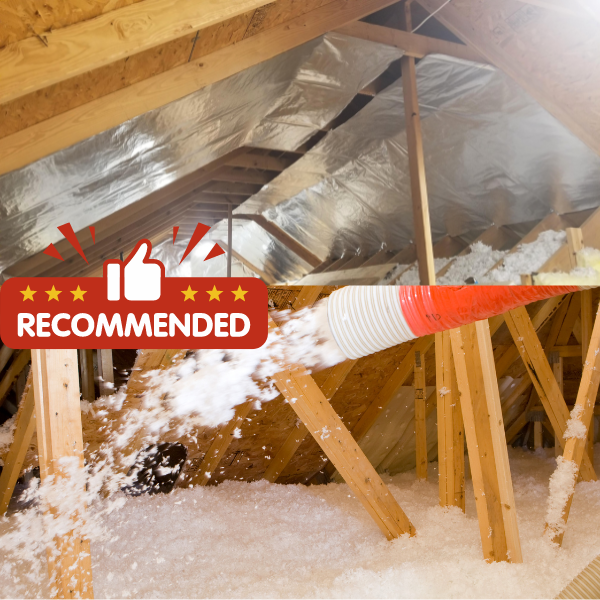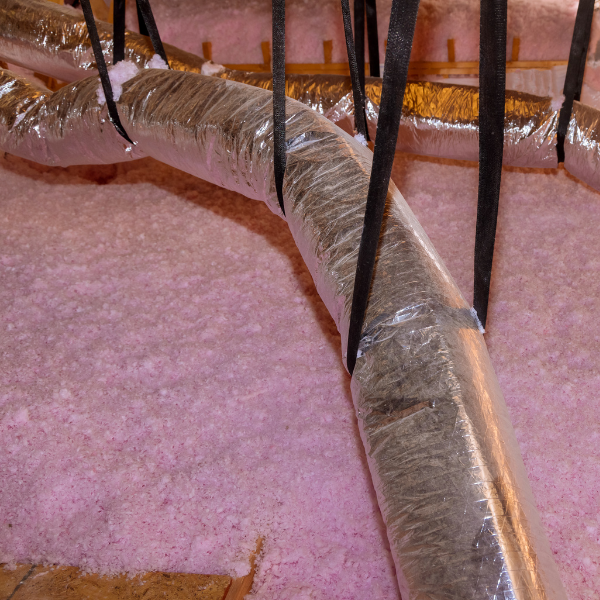Does AtticFoil™ Replace Regular Insulation?
Radiant barrier does NOT take the place of traditional insulation (fiberglass, cellulose, etc.). Attic insulation and radiant barrier work together in both hot and cold climates to make homes more energy efficient and comfortable. This is even true of using radiant barrier and spray foam insulation.
The best way to understand this concept is to think of your home is like a giant refrigerator. It makes common sense that if you have two identical refrigerators and put one in the sun and one in the shade that the refrigerator in the sun will use more energy to stay cold, right?
Why is this? The air temperature is exactly the same for both refrigerators; whether in the shade or the sun. What happens is that the surface temperatures of the refrigerators are different; the one in the sun will have a higher surface temperature due to the radiant heat from the sun beating down on it.
Radiant barriers act like shade in the summer – they block the radiant heat.
Traditional Attic Insulation vs. Radiant Barrier
It may be only 70º outside, but the outside surface of the refrigerator could easily be 120º to the touch. As far as the refrigerator is concerned it is 120º outside. The same thing occurs in your attic. It may be relatively cool out, say 70º. However, if it is sunny, the roof will heat up and then radiate heat down towards the insulation. The result is that the top of the insulation can easily be 20º- 40º hotter than the outside air temperature or the air temperature inside the attic. This is one reason we often need to run our A/C units even on mild temperature days.
By installing a radiant barrier, the radiant heat that would normally be absorbed by the attic insulation is now reflected/directed away. Using the refrigerator example, if we wrapped the refrigerator with radiant barrier foil and put it in the sun the surface temperature would only go up a few degrees compared to the 20º- 40º increase it would have without the radiant barrier. So in essence this is almost like putting the refrigerator in the shade.

Surface Temperatures Matter
Ultimately it’s all about surface temperatures. The larger the difference between the inside and outside surface temperature, the more heat will flow in or out.
How does this relate to your attic insulation? You can add more attic insulation, and this is probably a good idea for most homes. The problem is that it can become too much of a good thing. Traditional attic insulation has R-value; this works to slow conductive heat. Regular fiberglass or cellulose attic insulation only slow down heat via conduction, they do not stop or block heat; they also tend to hold heat in.
Radiant barriers reflect radiant heat.
BOTH types of heat are trying to enter your home on a hot, sunny day (or in the winter heat is trying to escape your home to the cold outdoors). The sun heats up the roof and then the heat is transferred by radiant heat across the attic space until it hits the attic insulation. Then, the heat transfer method switches from radiant heat to conductive heat to move through the attic insulation and into your home. This is why you need both types of insulation. Traditional attic insulation and radiant barrier work together and each do their part. Radiant barrier is your first line of defense (against radiant heat) and traditional attic insulation (fiberglass or cellulose) is the second line of defense against conductive heat gain.
Bottom line: you need a radiant barrier in addition to your traditional insulation.




